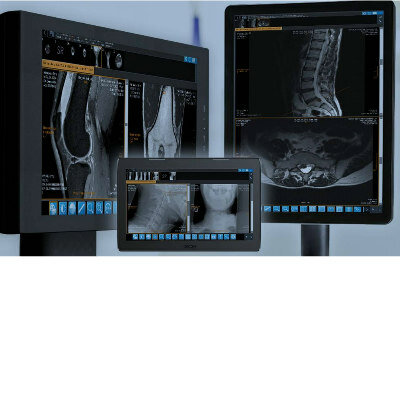MR Technique Reveals Signs of Rejections in Pediatric Heart Transplant Patients
By MedImaging International staff writers
Posted on 26 Jul 2012
Cardiologists have developed a noninvasive imaging technique that may help establish whether children who have had heart transplants are showing early signs of rejection. The modality could reduce the necessity for these patients to undergo invasive imaging tests every one to two years. Posted on 26 Jul 2012
The new method is described online July 2, 2012, in the Journal of Heart and Lung Transplantation. The invasive imaging test, a coronary angiogram, involves inserting a catheter into a blood vessel and injecting a dye to look for hazardous plaque on the walls of arteries feeding blood to the heart. This plaque accumulation indicates coronary artery disease and is an indication that the body may be rejecting the new heart. Because pediatric heart transplant patients are at high risk of developing coronary artery disease, clinicians monitor their arteries on a regular basis. However, recurring angiograms become problematic.
“Many of these children have undergone so many operations, we have lost access to their big blood vessels,” said Charles E. Canter, MD, professor of pediatrics at Washington University School of Medicine in St. Louis (MO, USA). “Sometimes it’s impossible to do catheterization procedures on them.”
Based on experience imaging other sorts of inflammation in arteries, senior author Samuel A. Wickline, MD, a professor of medicine, and his colleagues, including Dr. Canter and medical student Mohammad H. Madani, a Doris Duke Clinical research fellow, examined whether they could assess coronary artery disease in these children using magnetic resonance imaging (MRI). In this case, the MRI was enhanced with a typically used contrast agent called gadolinium that is injected into the arteries. Gadolinium is not radioactive and makes areas of inflamed arteries and heart muscle show up brighter on an MRI. “The brighter it is, the more it is associated with coronary artery disease,” Dr. Canter noted.
The study included 29 heart transplant patients and 8 healthy children who served as controls. The transplant patients underwent standard coronary angiograms as part of their normal care. They also had MRI scans of the coronary arteries to assess whether the noninvasive method correlated with the degree of coronary artery disease discovered in the angiograms. The eight children who served as controls only had MRI scans. The researchers evaluating the MRI results were blinded to the findings of the transplants patients’ angiograms.
Whereas all of the transplant patients’ angiograms showed evidence of plaque build-up, in only six of them was it severe enough for a diagnosis of coronary artery disease. These six patients had the brightest coronary arteries on the MRI scans, compared to both the transplant patients without coronary disease and the healthy control subjects. Still, the 23 transplant patients without diagnosed coronary disease had significantly brighter arteries than the healthy participants. Such evidence demonstrates the need to continue monitoring these patients.
Although the brightness of the arteries on MRI correlated well with a diagnosis of coronary artery disease, gadolinium can be toxic to the kidney, Dr. Canter pointed out. This means the technique cannot be used for patients with poor kidney function. Moreover, sharp images with MRI are difficult in very young children because of their high heart rates. In this study, no participant was younger than age 10. Nevertheless, Dr. Canter envisions a possible future place for this technique in helping to monitor the progress of coronary artery disease in transplant patients.
“The results of this pilot study were very promising,” Dr. Canter said. “But we need to look at more patients. We're in the process of developing a bigger study to confirm and refine the results. I think eventually this could be used as a screening technique, not so much to eliminate, but to reduce the number of angiograms.”
Related Links:
Washington University School of Medicine in St. Louis














